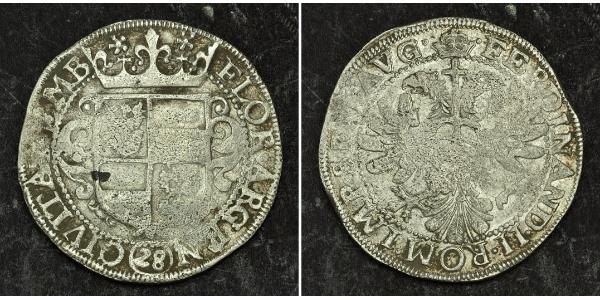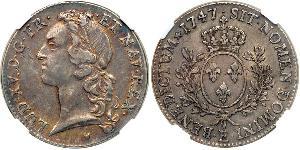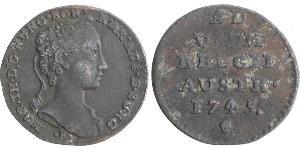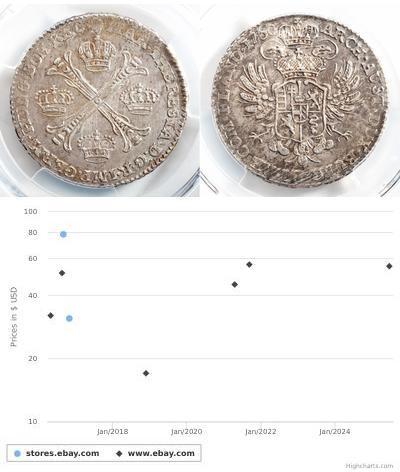(售价 $33.0)
1637, German States, Emden (City), Enno III. Silver 28 Stuber (2/3 Thaler) Coin.
Mint year: 1624-1637
Reference: Knyphausen 6286, Davenport 507, KM-10.
Denomination: 2/3 Thaler (28 Stüber = 1 Florin = 1 Gulden)
Condition: A typical for issue crude and weak strike, deposits in fields (probably a field find), otherwise F-VF,
Mint Place: Emden (City, East Frisia, Germany)
Weight: 19.71gm
Diameter: 39mm
Material: Silver
Obverse: Crowned and quartered coat-of-arms of Emden City, flanked by decorative foliage. Privy marks (two rosettes) above crown, value (28) in legend below.
Legend: FLOR . ARGEN (28) CIVITAS EMB
Reverse: Crowned double-headed imperial eagle with large cross-topped orb at chest. Legend of Emperor Ferdinand II around.
Legend: FERDINAND . II . ROM . IMP . SEMP . AVG .
Emden is a city and seaport in the northwest of Germany, on river Ems. The exact founding date of Emden is unknown, but it has existed at least since the 8th century. Older names for Emden are Amuthon, Embda, Emda, Embden. City rights and the city's coat of arms, the "Engelke up de Muer" was granted by Emperor Maximilian I in 1495.
Emden was a very rich city during the 17th century, due to large numbers of Dutch immigrants. It was a center of reformed Protestantism at that time, producing the first Bible translation in Dutch. During the Napoleonic French era, Emden and the surrounding lands of East Frisia were part of the short-lived Kingdom of Holland.
Enno III of Ostfriesland or Enno III of East Frisia (30 September 1563, Aurich – 19 August 1625) was a Count of Ostfriesland from 1599 to 1625 from the Cirksena family. He was the elder son of Count Edzard II of Ostfriesland and his wife Princess Katarina of Sweden, eldest daughter of King Gustav I of Sweden.
In 1602 Enno III's troops laid siege to Emden, without success; On 8 April 1603 Enno had to sign the Treaty of 's-Gravenhage in which he not only accepted the presence of a Dutch garrison in Emden, but agreed to pay the costs for the Dutch garrison. In 1609 the conflict broke out again; the Emders were victorious in a skirmish at Greetsiel and temporarily occupied the Count's residence at Aurich. In 1611 the Dutch garrisoned troops in Leerort. On 24 May the Accord of Osterhusen was signed, which limited the sovereignty of the Count of East Frisia, stated the rights of the Estates (including Emden) and legitimised the Dutch garrison in Leerort.
1 Liard Austrian Netherlands (1713-1795) 銅
本组有 4 钱币 / 4 售价
⇑
















-300-150-P8gsHgTy6VEAAAGTRmDWdZPt.jpg)







